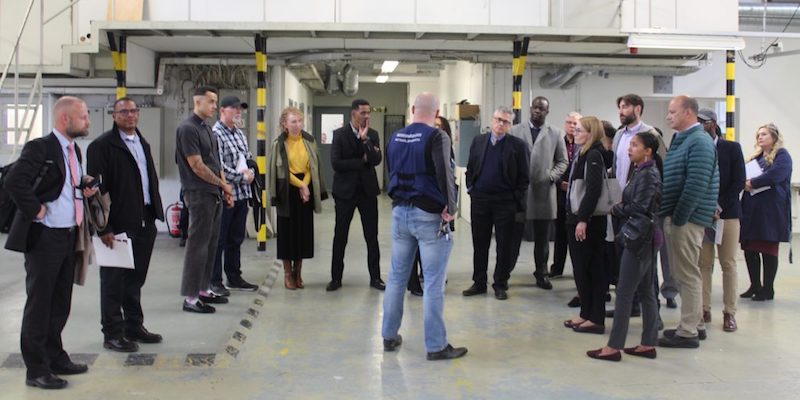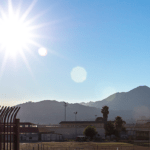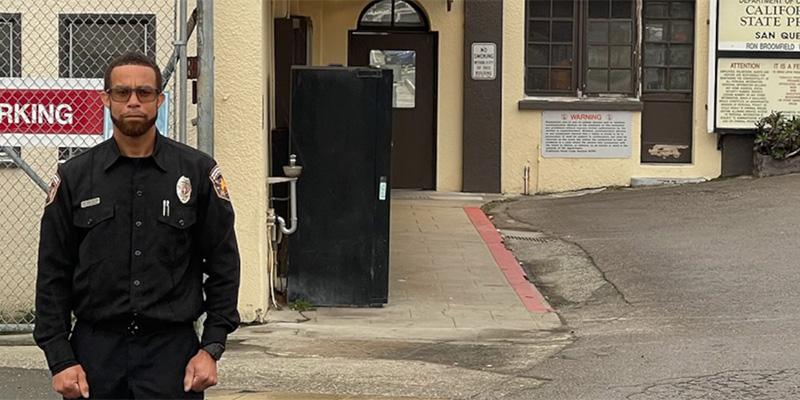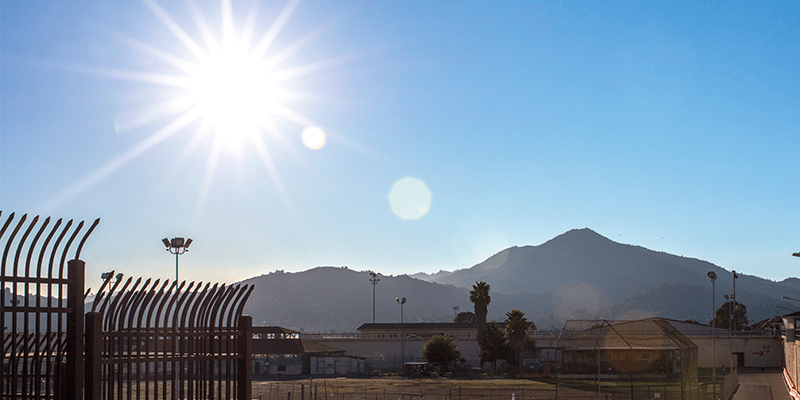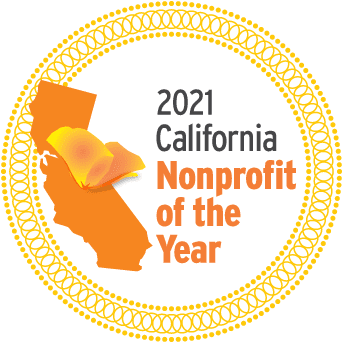In the fall of 2019, Sia Henry, Prison University Project board member and Senior Program Associate at Impact Justice, organized and led a delegation of 23 California state officials, community-based advocates, and funders to visit correctional facilities in Norway and Finland as part of Impact Justice’s Building Justice initiative. We spoke with Sia about her experience and how the lessons learned could help transform California’s criminal justice system.
What was the original idea for this trip?
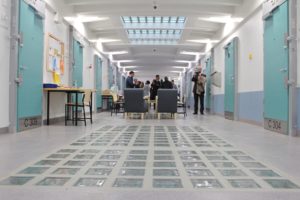
A housing unit in a Helsinki prison: all incarcerated people have their own rooms, each equipped with a bathroom, desk, storage closet, and windows that open.
Impact Justice is a national innovation and research center dedicated to significantly reducing the number of people entering the criminal justice system, improving conditions for incarcerated people, and providing meaningful support to people as they re-enter society. From September 29 – October 5, 2019, Impact Justice took a group of 23 California state officials, community-based advocates, funders, journalists, and others with relevant backgrounds to visit correctional facilities in Norway and Finland to meet with incarcerated people, facility staff, and members of relevant government agencies and non-profit organizations.
Anne Irwin, founder and director of Smart Justice California and a former Prison University Project board member, worked with Brie Williams at UCSF to arrange a similar trip to Norway in mid-September for a group of about 30 individuals (mainly California Department of Corrections and Rehabilitation wardens and other officials, including CDCR Secretary Ralph Diaz; representatives from the California Correctional Peace Officers’ Association; and a couple of California state legislators). Anne’s group only visited Norway, and their tour focused more exclusively on prison reform rather than broader, criminal justice system reform.
Our next step is to work with Anne’s group to organize a convening for attendees from both of our trips, along with other stakeholders, to debrief lessons learned and identify concrete opportunities to use those lessons to transform California’s criminal justice system. I anticipate that convening will take place around the end of 2019 / early 2020.
Who was invited to attend?
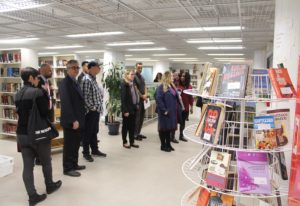
The library in a Helsinki prison
We invited a large and diverse range of people, namely California state legislators; formerly incarcerated, criminal justice reform advocates; journalists; and criminal justice reform funders. We deliberately invited people with such a diverse background because we wanted attendees to have the opportunity to learn, not only from the tours, meetings, and presentations, but also from each other through informal conversations. It was especially important for us to bring formerly incarcerated people, who are truly the most important experts when it comes to discussing prison and criminal justice system reform.
What were the stated goals of the trip?
Our goal was for the group to gain an in-depth understanding of how these two countries have significantly reduced their prison populations while radically shifting the focus of their penal systems from punishment to rehabilitation and healing.
Impact Justice planned this trip with the support of California State Senator Nancy Skinner. Senator Skinner shares Impact Justice’s belief that, as a shared experience, the trip would not only inform and inspire this influential group but also unite them in a common purpose: to transform the lives of the people who live and work in California prisons and others affected by the state’s criminal justice system and, in so doing, the lives of their loved ones and the greater community.
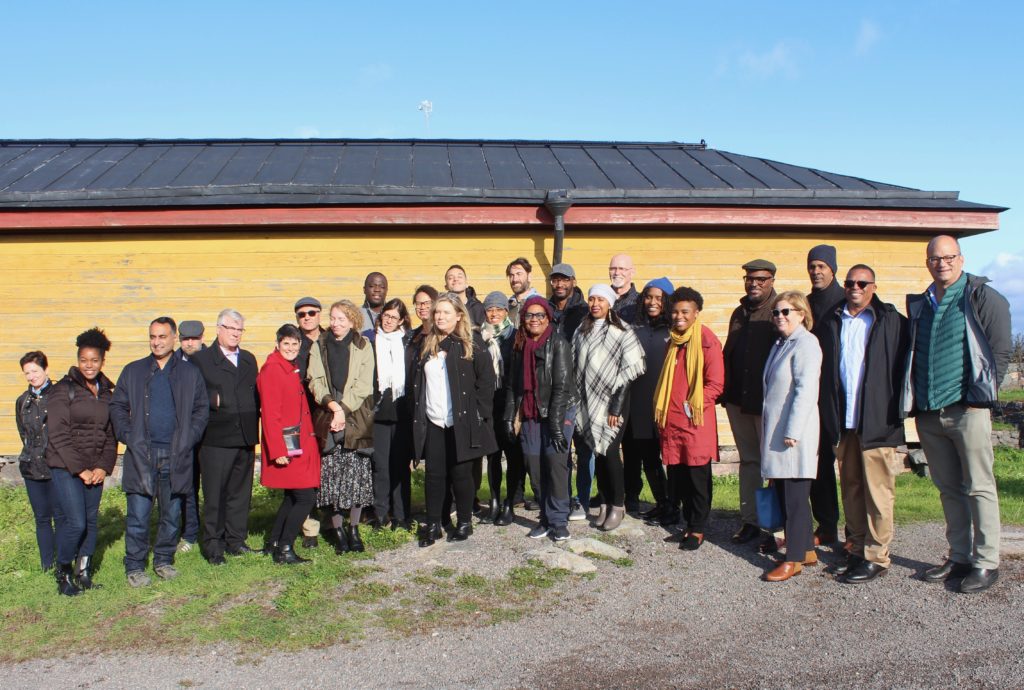
The group visits an “open” prison on Suomenlinna Island in Finland. The men at this prison sleep there but can leave to go back to the mainland for work, school, or to visit loved ones during the day.
What were your personal goals for the trip?
Groups from all over the world have been traveling to Norway to tour their prisons for the last couple of years. Norway is frequently praised as having the “world’s most humane” prison system. While I think it was important for our group to understand that there are much healthier ways to approach incarceration, my real goal was for the group to realize that, in order to move towards a prison system similar to the ones found in places like Norway and Finland, we must significantly and sustainably reduce the number of people we are incarcerating by introducing much-needed resources and services into the communities most impacted by our criminal justice system. On the last day of the trip, we met with the National Mediation Service (a federal agency that started a restorative diversion type of program for youth in Norway a couple of years ago) and the Norwegian Association for Penal Reform (a prison reform / abolition group founded in the late 1960s). I deliberately chose to end our trip with these two groups because I want to challenge the popular belief that the Scandinavian prison system should be our end goal. I wanted to challenge the assumption that we “need” to incarcerate people in order to achieve “public safety” and, instead, push our attendees to really consider the possibility of prison abolition and what it would look like to live in a society that provides universal access to the resources people need to live whole, happy, and healthy lives.
What were your key takeaways from the experience?
-
Norway’s approach to incarceration stresses the importance of maintaining “normalcy” for incarcerated people, to the extent possible (i.e. their removal from society should be the only punishment).
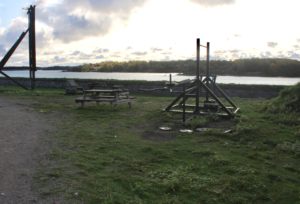
An outdoor gym overlooking the water at the “open” prison on Suomenlinna Island
- Before our tour of a maximum security prison in Norway, the director gave us a presentation. One of the correctional officers stopped by the presentation around the same time someone from our group asked about violence at the prison. The prison director introduced the officer and said: “He runs one of the housing units…he could make the men [who live in his unit] dangerous if he wanted to but since we treat everyone here with kindness and respect, we get the same in return.”
- Even in a country known for having the world’s most “humane prison system,” the Norwegian Association for Penal Reform (the largest prison reform group in Scandinavia that’s been around since 1966) makes it clear that prison abolition should still be the end goal.
- We can’t reform the criminal legal system, or even prisons, in a vacuum. Instead, in order to bring about meaningful change, we will have to also create a strong foundation / system of welfare to ensure all people within our society have a quality, standard baseline of care.
- In Finland, crimes committed by people under 15 years old are addressed through the child welfare system because children cannot be charged with a crime.
How might any lessons from this trip inform the work of the Prison University Project? How will they inform your own professional endeavors?
In line with the commitment to maintaining “normalcy” for incarcerated people, in Norway and Finland, the Ministry of Health runs healthcare inside prisons. Similarly, the Ministry of Education runs educational programs and libraries inside. I think the Prison University Project is doing a good job of providing the same level of education offered to people in the community (i.e., the Prison University Project is doing what it can to maintain and instill a sense of normalcy in the area of education for incarcerated people at San Quentin). If possible, I think it’d be valuable to find opportunities for the Prison University Project to collaborate with the broader educational field (especially grade schools) to improve the trajectory for young people at the greatest risk of being impacted by the criminal legal system.
Professionally, I want to be more intentional about engaging with other fields (e.g., education, public health, mental health, architecture, urban planning, etc) to support the creation of the kind of society necessary for prison abolition to be possible.
For more information, read Sia’s “Building Justice Project: Reflections on the Finnish justice system” on Impact Justice’s website.
Please note that the Prison University Project became Mount Tamalpais College in September 2020.
